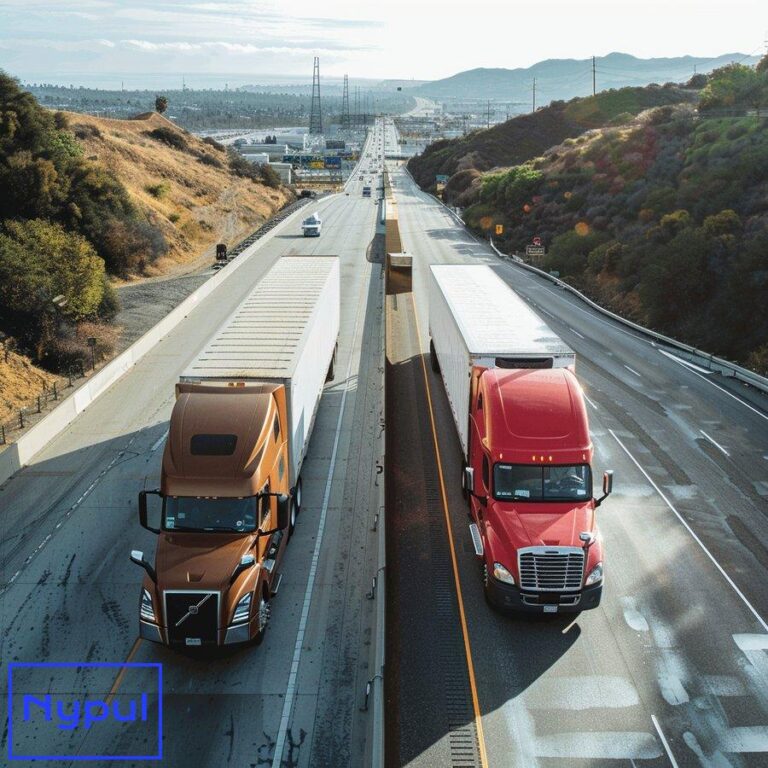What Is Drayage in Supply Chain
What is Drayage and Why is it Important in Supply Chain?
Drayage is a critical component of the logistics and supply chain industry, referring specifically to the transport of goods over short distances. This process typically involves moving freight from ports to warehouses, rail yards, or other distribution centers. Despite its seemingly minor role, drayage serves as the first step in the supply chain, often setting the tone for the entire logistics operation.
The significance of drayage can be likened to the first domino in a row; if it falls incorrectly, the entire chain is disrupted. This initial phase of transportation is vital for ensuring that goods are moved efficiently and effectively, facilitating the flow of products from manufacturers to consumers.

Importance of Drayage
Drayage is essential for several reasons:
-
Connection between Transportation Modes: Drayage services provide the necessary links between different modes of transportation, such as ocean freight and rail transport. This connectivity is crucial for multimodal shipping, where goods may travel by truck, rail, and sea.
-
Facilitating Global Trade: Major ports, such as those in Los Angeles and Long Beach, account for a significant portion of container trade in North America. Efficient drayage operations at these ports are vital for maintaining the flow of goods into the country.
-
Impact on Supply Chain Efficiency: Delays in drayage can lead to significant backlogs, affecting the entire supply chain. Efficient drayage operations help minimize these delays, ensuring timely delivery of goods.
-
Economic Contribution: The drayage industry contributes significantly to the economy, with the Los Angeles drayage marketplace alone valued at approximately $60 billion annually.
Understanding drayage is essential for businesses involved in shipping and logistics, as it directly impacts their operational efficiency and overall success in the marketplace.
How Does the Drayage Process Work?
The drayage process involves several steps that are crucial for the effective movement of goods. Understanding these steps helps businesses optimize their logistics operations.

Steps in the Drayage Process
-
Pickup from Port: The drayage truck picks up cargo from a port, where containers are unloaded from ships.
-
Transport to Destination: The cargo is then transported to its next destination, which could be a rail yard, warehouse, or distribution center.
-
Transfer to Another Mode of Transport: If the cargo is to be shipped further, it may be transferred to another mode of transport, such as a train or another truck.
-
Final Delivery: The last leg of the journey involves delivering the cargo to its final destination, such as a retail store or fulfillment center.
Table: Typical Drayage Process Flow
| Step | Action | Description |
|---|---|---|
| 1 | Pickup | Cargo is picked up from the port. |
| 2 | Transport | Cargo is transported to the next destination. |
| 3 | Transfer | Cargo is transferred to another transport mode. |
| 4 | Delivery | Cargo is delivered to the final destination. |
Each step in the drayage process is interconnected, and any disruption can lead to delays and increased costs. Therefore, it is essential for businesses to manage these operations effectively.
What Are the Different Types of Drayage Services?

Drayage services can be categorized into several types, each serving specific transportation needs within the supply chain. Understanding these types helps businesses choose the right service for their logistics requirements.
Types of Drayage Services
-
Inter-carrier Drayage: This involves the movement of cargo between different carriers, such as from a truck to a train. It is essential for connecting various transportation modes.

-
Intra-carrier Drayage: This type refers to the movement of cargo within the same carrier’s network, such as from a rail hub to an intermodal hub.
-
Pier Drayage: Involves transporting goods to or from a pier or dock, often connecting maritime transport with land-based logistics.
-
Expedited Drayage: This service is designed for time-sensitive cargo, ensuring quick transport over short distances.
-
Door-to-Door Drayage: Involves transporting goods directly from a shipper’s location to the final destination, providing a seamless service for customers.
-
Shuttle Drayage: This service temporarily moves cargo to a parking lot or storage area, often used when terminals are overcrowded.
Table: Types of Drayage Services
| Type of Drayage | Description |
|---|---|
| Inter-carrier | Movement between different carriers. |
| Intra-carrier | Movement within the same carrier’s network. |
| Pier | Transport to or from a dock or pier. |
| Expedited | Quick transport for time-sensitive goods. |
| Door-to-Door | Direct transport from shipper to destination. |
| Shuttle | Temporary transport to alleviate congestion. |
Each type of drayage service plays a vital role in the overall logistics process, ensuring that goods are moved efficiently and effectively.
How Does Drayage Fit into Intermodal Transportation?
Intermodal transportation involves using multiple modes of transport to move goods from origin to destination. Drayage serves as a crucial link in this process, facilitating the transfer of cargo between different transportation modes.
Role of Drayage in Intermodal Transportation
-
Connecting Different Modes: Drayage connects ocean freight with rail and truck transport, ensuring that goods can move seamlessly between these modes.

-
Efficiency in Logistics: By utilizing drayage services, businesses can optimize their logistics operations, reducing transit times and costs.
-
Flexibility in Shipping: Drayage allows for flexibility in shipping routes and methods, enabling businesses to adapt to changing market conditions and customer demands.
Table: Intermodal Transportation Process
| Step | Mode of Transport | Description |
|---|---|---|
| 1 | Truck | Cargo is picked up from the origin. |
| 2 | Ocean Freight | Cargo is shipped overseas. |
| 3 | Rail | Cargo is transferred to a train for inland transport. |
| 4 | Truck | Final delivery to the destination. |
Drayage is integral to the success of intermodal transportation, ensuring that goods are moved efficiently and effectively across various transport modes.
What Challenges Do Drayage Operations Face?
Drayage operations encounter several challenges that can impact efficiency and effectiveness. Understanding these challenges is crucial for businesses looking to optimize their logistics operations.


Common Challenges in Drayage
-
Port Congestion: Major ports often experience congestion, leading to delays in cargo pickup and delivery. This issue can significantly impact the overall supply chain.
-
Equipment Shortages: A lack of available containers and chassis can create bottlenecks in the drayage process, hindering the movement of goods.
-
Regulatory Compliance: Drayage operators must navigate various regulations and compliance requirements, which can complicate operations and increase costs.
-
Driver Shortages: The logistics industry faces a shortage of qualified drivers, which can lead to delays in drayage services.
Table: Challenges in Drayage Operations
| Challenge | Description |
|---|---|
| Port Congestion | Delays due to overcrowding at ports. |
| Equipment Shortages | Lack of containers and chassis. |
| Regulatory Compliance | Navigating complex regulations. |
| Driver Shortages | Insufficient qualified drivers. |
Addressing these challenges requires proactive management and strategic planning to ensure smooth drayage operations.
How is Technology Transforming Drayage Management?
Technology is playing an increasingly important role in transforming drayage management, enhancing efficiency and effectiveness in operations.
Technological Innovations in Drayage
-
Transportation Management Systems (TMS): These systems help businesses optimize their logistics operations by providing real-time data and analytics for better decision-making.
-
Automation: Automation technologies, such as automated truck loading and unloading systems, can streamline operations and reduce the time required for drayage services.
-
Tracking and Visibility Tools: Advanced tracking systems allow businesses to monitor cargo in real-time, improving visibility and reducing the risk of delays.
Table: Technology in Drayage Management
| Technology | Benefit |
|---|---|
| Transportation Management Systems | Optimizes logistics operations. |
| Automation | Streamlines operations and reduces time. |
| Tracking and Visibility Tools | Improves real-time monitoring of cargo. |
The integration of technology in drayage management is essential for businesses looking to enhance their logistics operations and remain competitive in the market.
What is the Economic Impact of Drayage on Supply Chains?
Drayage has a significant economic impact on supply chains, influencing costs, efficiency, and overall market dynamics.

Economic Contributions of Drayage
-
Cost Efficiency: Efficient drayage operations can reduce transportation costs, positively impacting the bottom line for businesses.
-
Market Competitiveness: A well-functioning drayage system enhances the competitiveness of businesses by ensuring timely delivery of goods.
-
Job Creation: The drayage industry supports numerous jobs, from truck drivers to logistics managers, contributing to the overall economy.
Table: Economic Impact of Drayage
| Impact Area | Description |
|---|---|
| Cost Efficiency | Reduces transportation costs. |
| Market Competitiveness | Enhances business competitiveness. |
| Job Creation | Supports employment in the logistics sector. |
Understanding the economic impact of drayage is essential for businesses looking to optimize their supply chain operations and drive growth.
In conclusion, drayage plays a vital role in the logistics and supply chain industry, serving as the crucial link that connects various transportation modes. By understanding the processes, challenges, and technological advancements in drayage, businesses can optimize their logistics operations and enhance their overall supply chain efficiency.






